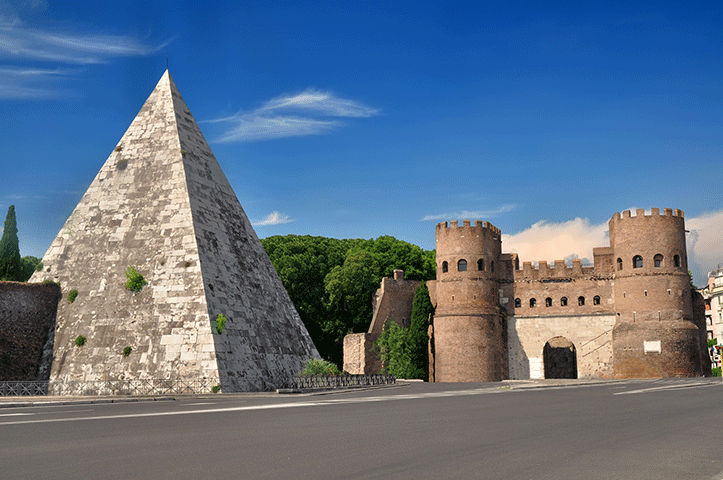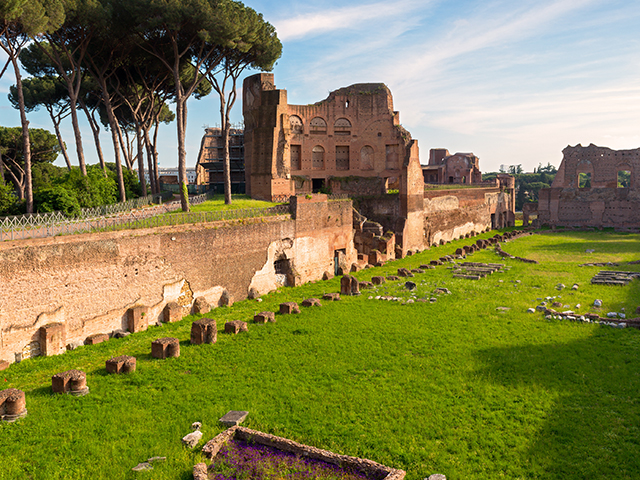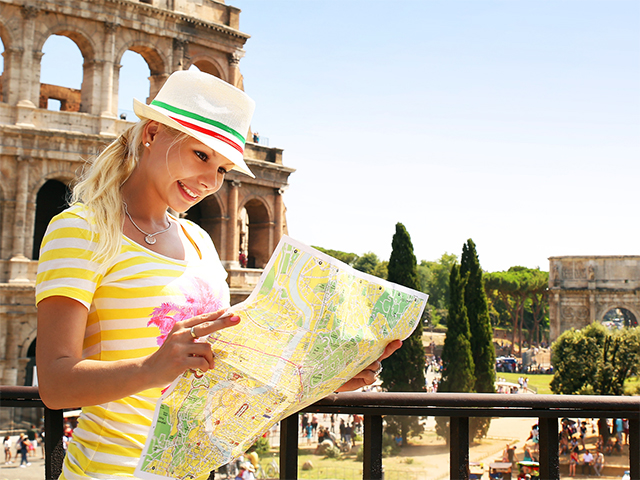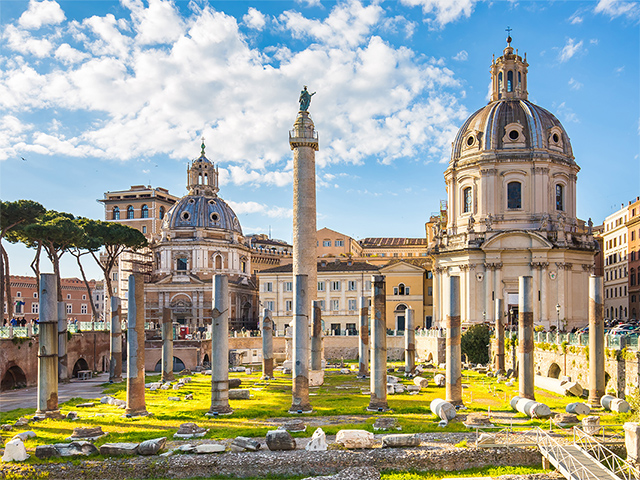The Imperial Fora in a few hours
Visiting the Imperial Fora in a short time: visiting and opening times, ticket prices and all useful information.THE IMPERIAL FORA
The area of the Imperial Fora represents for sure one of the most famous and at the same time most fascinating archaeological and historical areas in the world. The promenade that starts at the Colosseum and ends at Venice Square takes everyone aback and moves even the most experienced tourist.
But what are exactly the Imperial Fora? They are a number of squares and monuments built mainly by Roman emperors Cesar and Augustus in less than two centuries, in the center of Rome.
VISIT THE MUSEUM OF THE IMPERIAL FORUMS
HISTORY
Let's start with a pearl: originally the “valley of the forum” was a swampland!
It was actually emperor Caesar in 46 B.C. who iniciated the reclamation and started using the area (the expropiation of the lands cost him over 60 million sestertius!! (an ancient Roman coin)). The forum of Caesar was followed by the forum of Augustus, the forum of the Peace, built by Vespasian, the forum of Nerva, and finally the spectacular forum of Trajan, with the group of Trajan markets.
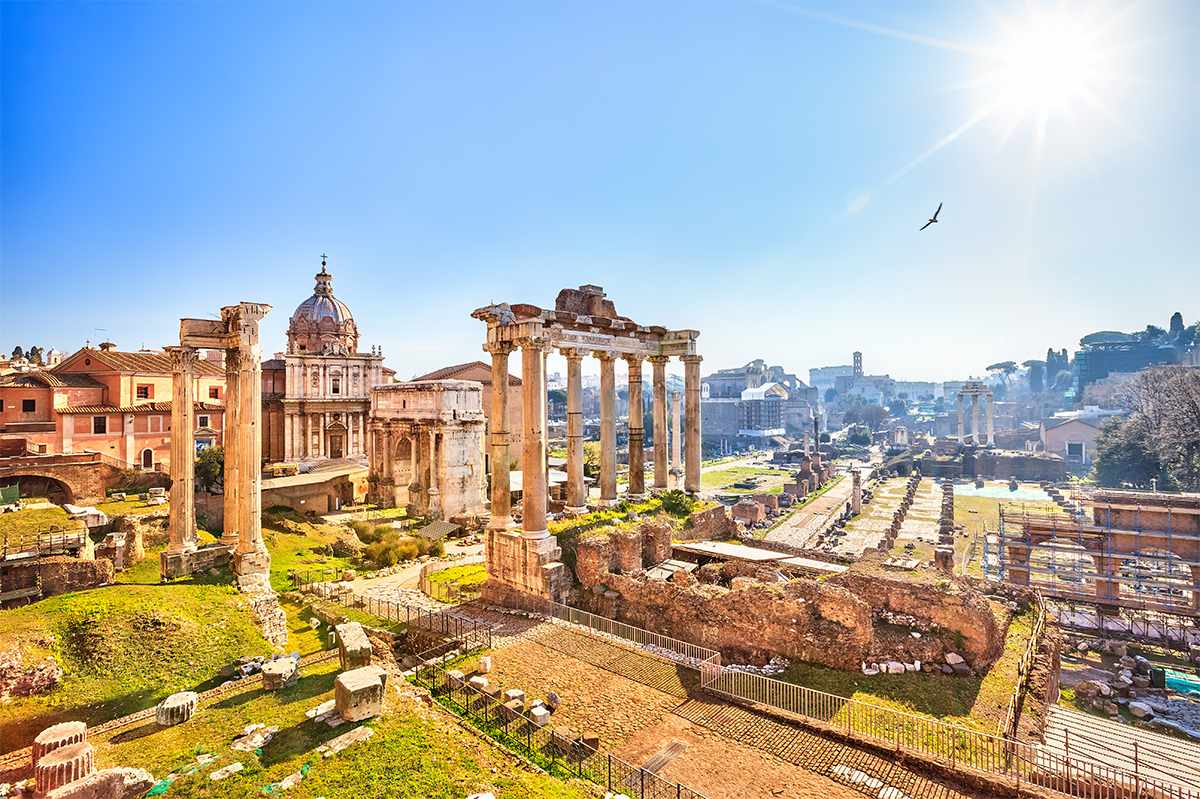
Imperial Fora, a 2,000 year old story
WHAT IS LEFT TO SEE?
What is it possible to see today visiting the Imperial Fora? The Fora are essentially remains, portions and fragments that seen altogether give the idea of greatness and importance that this area has for so many centuries had.
- From the Forum of Caesar remain at present some columns and the podium of the temple of Venus, as well as some portions of the colu porzioni dei colonnades and arcades that delimited the square and many architectonical fragments spread around the whole area.
- From the Forum of August are today still visible large rests of the temple, with its splendid Corinthian order colonnade, the whole northern exedra and most of the southern exedra.
- The Temple of Peace has been almost completely buried under the modern street: some parts are visible at the Basilica of Maxentius, of the church of Saints Cosmas and Damian and at the medieval fortified tower of Torre dei Conti, at the end of Via Cavour.
- The Forum of Nerva, built actually by Domitian, is almost completely buried under the Imperial Fora: a small part of it has survived as the foundations of the temple of Minerva.
Take 5 minutes to observe, on the shaft of the column, the two battles of Trajan against the Dacians and narrated in bas relief: battles, scenes of life, executions... amazing!
Trajan's Column

The Forum of Trajan including the splendid Trajan's Column (Rome)
Last and biggest of the Roman Fora, the Forum of Trajan including the splendid Trajan's Column, the emperor's funerary monument, only monument perfectly perserved.
It is not a waste of time to stop for 5 minutes to observe, on the shaft of the column, the two battles of Trajan against the Dacians and narrated in a 200-meter continuous spiral bas relief: battles, scenes of life, executions, building fortifications, everything is reported with very impressive accuracy and realism.
Next to the Trajan's Columns, the Siriam architect Apollodorus of Damascus built the Trajan's Market designed for retail sale.
IMPERIAL FORA TODAY
Between 1932 and 1933 Mussolini, trying to build a rectilinear path for militar parades, decided to “cut” in two the complex building the “Way of the Empire”, precisely today's Via dei Fori Imperiali (Way of the Imperial Fora). It's no coincidence that on the 2nd of June, the parade of festa della Repubblica, the Italian National Day, takes place in this street.
Mussolini's decision is still today very discussed. Apart from the criticisms regarding the conservation and the lost of important heritage present at the Fora, the spectacular nature of this street as a tourist is undeniable. More or less wittingly, the fascism realized a tourist itinerary beyond comparison.
Useful information
Via dei Fori Imperiali is open to public for free. Walking along this promenade you can observe, right and left, the monuments and historical remains. There is admission with fee to see some monuments that are part of the complex of the Roman Forum and Palatine Hill.
- HOW TO GET THERE
From the Port of Civitavecchia go to the train station and take the first train stopping at Roma Termini.
Once at Termini take the metro line B (it is under the train station) and get off at "Colosseo".
- TIMETABLES
OPENING TIMES ROMAN FORUM AND PALATINE HILL: from 8.30 to 1 hour before sunset. Closed on the 1st JAnuary, 1st May and 25th December.
- PRICES
PRICES ROMAN FORUM AND PALATINE HILL: full ticket €12.00 reduced €7.50 for EU citizens between 18 and 24 years old and for UE teachers. Free for visitors under 18.



 PORT MOBILITY CIVITAVECCHIA
PORT MOBILITY CIVITAVECCHIA








